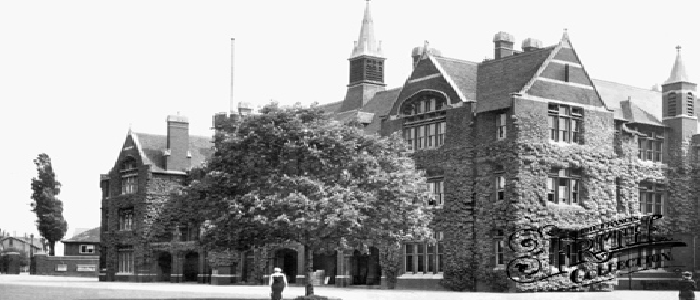The recent bad weather can make an excellent case study for the climatic hazards section of the OCR A2 Global issues Paper:
The syllabus looks for:
"The study of high and low pressure systems and air masses to illustrate the formation of hazards, ie heavy snowfall and frost, and how they represent hazards to people through blizzards and cold spells. They then look for the impacts associated with these weather features for named areas at the local, regional and global scale, including impacts on:
– transport;
– agriculture and forestry;
– health;
– economic activity. "
So lets take a look...
Videos:
A number of issues looked at around the Isle of Arran, W.Scotland
Causes:
The Jetstream has fixed in a position south of the UK drawing in colder air masses from the North. Explanation Here. A blocking anticyclone is sitting to the North of the UK which is drawing in predominantly North Easterly air masses due to its clockwise rotation. This has brought the cold and its blocking nature is the reason why the original cold weather has become a Cold Spell.Video The reason it snowed a lot at first was down to warm moist air from our regular prevailing South Westerly winds meeting cold air masses. This forced the warmer air to rise but also cool and condense. The extreme cold means that it fell as snow rather than rain. ie Heavy Snowfall. This has very much been a national scale hazard with most parts of the UK experiencing both heavy snow and the cold spell. The scale is caused by the movement of the jetstream which draws weather down from the North for the whole of the UK and also affected parts of Western Europe. The area covered by the anticyclone is large but the winds rotating around it can easily cover an area the size of the UK.
Impacts:
Transport:
A school group from Calder High school in Arran were trapped at a fieldtrip centre in Yorkshire since driving conditions became too treacherous.
Extreme rural areas have been cut off for a number of days in the Peak District, Cumbria and Wales. Link.
In South West Scotland, drivers on the A75 in Dumfries and Galloway were trapped overnight in their cars.
Road, rail, ferries and flights were all disrupted in Northern Ireland.
All flights at Humberside airport were briefly stopped.
Agriculture:
The conditions came in at lambing season threatening the lives of sheep stuck in drifts and therefore nthe livelihoods of pastoral farmers. This has especially been true in rural parts of Northern Ireland and Scotland.
http://www.bbc.co.uk/news/uk-21936592
http://www.bbc.co.uk/news/uk-21936873
Health
A small number of people were killed as a result of exposure by getting trapped in poor conditions int he snow. Some of these were as a result of taking part in riskier activities such as hillwalking in the Scottish Highlands.
One example can be seen here
Economic Activity
Many sporting fixtures were lost which bring revenue in at both a local and regionals cale depending on their significance. The transport disruption meant many people lost working days.
The first section of this paper will also look for
Management
Regional Scale
http://www.bbc.co.uk/news/uk-21921896
Teams of engineers have been dispatched to areas of Arran without power. This has taken longer in rural communities. This could be appropriate because of Government assistance in emergency funding and the UK having a well trained workforce in this area.
National Scale
http://www.bbc.co.uk/news/uk-northern-ireland-21917589
Multiple agencies in Northern Ireland have coordinated rescue efforts together. This is possible due to mixtures of public and private funding. High levels of training and effective communication and transport infrastructure.
At a smaller scale, farmers on the Isle of man have coordinated at the community level to assist in rescuing liovestock and to find extra shelter and food from other farmers and locals for them.
http://www.bbc.co.uk/news/uk-21945465
In the UK, a number of key agencies transmit important safety information widely via the internet and social media sites such as twitter. the include the BBC, the Met Office, The Environment Agency and National Rail. This allows people to maximise the time they have to prepare for a hazard or plan their personal responses to it, such as travel routes.
Specially trained rescue teams resued drivers stuck on roads. Link
Links
http://www.bbc.co.uk/news/uk-21907837
The syllabus looks for:
"The study of high and low pressure systems and air masses to illustrate the formation of hazards, ie heavy snowfall and frost, and how they represent hazards to people through blizzards and cold spells. They then look for the impacts associated with these weather features for named areas at the local, regional and global scale, including impacts on:
– transport;
– agriculture and forestry;
– health;
– economic activity. "
So lets take a look...
Videos:
A number of issues looked at around the Isle of Arran, W.Scotland
Causes:
The Jetstream has fixed in a position south of the UK drawing in colder air masses from the North. Explanation Here. A blocking anticyclone is sitting to the North of the UK which is drawing in predominantly North Easterly air masses due to its clockwise rotation. This has brought the cold and its blocking nature is the reason why the original cold weather has become a Cold Spell.Video The reason it snowed a lot at first was down to warm moist air from our regular prevailing South Westerly winds meeting cold air masses. This forced the warmer air to rise but also cool and condense. The extreme cold means that it fell as snow rather than rain. ie Heavy Snowfall. This has very much been a national scale hazard with most parts of the UK experiencing both heavy snow and the cold spell. The scale is caused by the movement of the jetstream which draws weather down from the North for the whole of the UK and also affected parts of Western Europe. The area covered by the anticyclone is large but the winds rotating around it can easily cover an area the size of the UK.
Impacts:
Transport:
A school group from Calder High school in Arran were trapped at a fieldtrip centre in Yorkshire since driving conditions became too treacherous.
Extreme rural areas have been cut off for a number of days in the Peak District, Cumbria and Wales. Link.
In South West Scotland, drivers on the A75 in Dumfries and Galloway were trapped overnight in their cars.
Road, rail, ferries and flights were all disrupted in Northern Ireland.
All flights at Humberside airport were briefly stopped.
Agriculture:
The conditions came in at lambing season threatening the lives of sheep stuck in drifts and therefore nthe livelihoods of pastoral farmers. This has especially been true in rural parts of Northern Ireland and Scotland.
http://www.bbc.co.uk/news/uk-21936592
http://www.bbc.co.uk/news/uk-21936873
Health
A small number of people were killed as a result of exposure by getting trapped in poor conditions int he snow. Some of these were as a result of taking part in riskier activities such as hillwalking in the Scottish Highlands.
One example can be seen here
Economic Activity
Many sporting fixtures were lost which bring revenue in at both a local and regionals cale depending on their significance. The transport disruption meant many people lost working days.
The first section of this paper will also look for
Management
Regional Scale
http://www.bbc.co.uk/news/uk-21921896
Teams of engineers have been dispatched to areas of Arran without power. This has taken longer in rural communities. This could be appropriate because of Government assistance in emergency funding and the UK having a well trained workforce in this area.
National Scale
http://www.bbc.co.uk/news/uk-northern-ireland-21917589
Multiple agencies in Northern Ireland have coordinated rescue efforts together. This is possible due to mixtures of public and private funding. High levels of training and effective communication and transport infrastructure.
At a smaller scale, farmers on the Isle of man have coordinated at the community level to assist in rescuing liovestock and to find extra shelter and food from other farmers and locals for them.
http://www.bbc.co.uk/news/uk-21945465
In the UK, a number of key agencies transmit important safety information widely via the internet and social media sites such as twitter. the include the BBC, the Met Office, The Environment Agency and National Rail. This allows people to maximise the time they have to prepare for a hazard or plan their personal responses to it, such as travel routes.
Specially trained rescue teams resued drivers stuck on roads. Link
Links
http://www.bbc.co.uk/news/uk-21907837
















